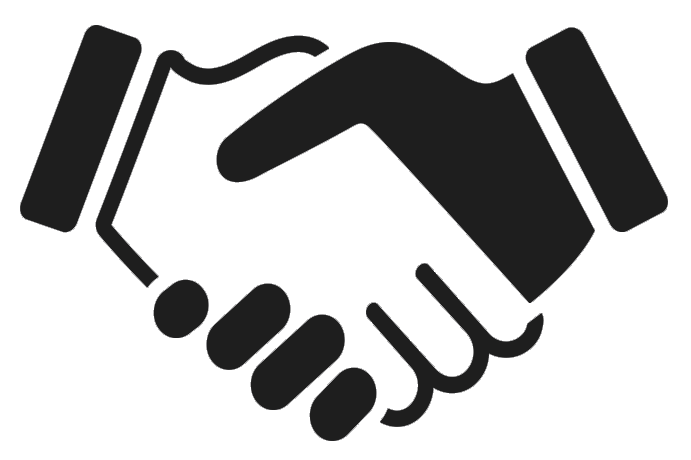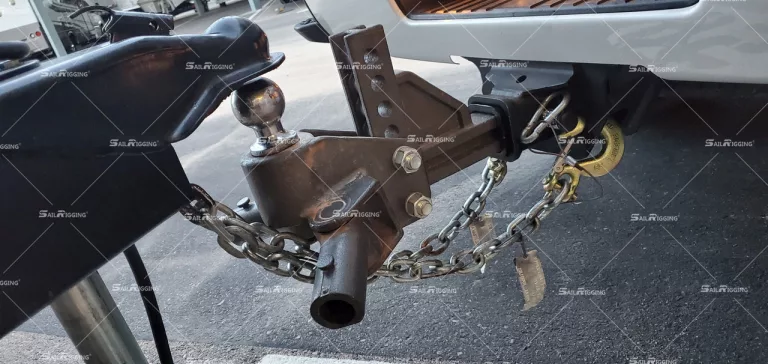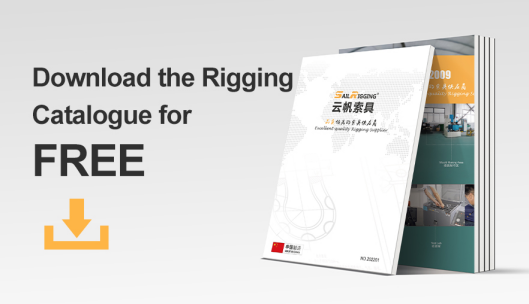Safety chains are one of the most important components for secure towing, towing trailer vehichle, providing an additional layer of protection in the event of a trailer detachment from the tow vehicle. Proper use of safety chains ensures that even if the primary connection fails, the trailer remains tethered to the tow vehicle, reducing the risk of accidents, damage, and injury. However, improper installation or usage of safety chains can be just as dangerous as not using them at all. In this article, we’ll discuss the right and wrong ways to use safety chains, along with tips to ensure your towing setup is both safe and secure.
What Are Safety Chains?
Safety chains are metal chains that connect the tow vehicle to the trailer as a secondary form of attachment, providing a backup in case the primary hitch connection fails. Typically made from high-strength steel, safety chains are designed to handle the forces generated by towing and to keep the trailer attached to the tow vehicle.
The Right Way to Use Safety Chains
Using safety chains correctly is essential for safe towing. Here’s how to do it the right way:
Step 1: Choose the Correct Safety Chains
- Size and Strength:Ensure the safety chains are rated to handle the Gross Trailer Weight (GTW) of the trailer. Always select chains that are rated higher than the trailer’s weight to ensure they can bear the load during towing.
- Chain Material:Safety chains are commonly made of galvanized or stainless steel. Choose a material that is durable and resistant to corrosion, especially if towing in harsh weather conditions.
Step 2: Attach Safety Chains Properly
- Cross the Chains:When attaching the safety chains to the tow vehicle and the trailer, it is important to cross the chains beneath the hitch. This crisscross pattern forms a cradle for the trailer tongue, preventing it from hitting the ground if the hitch disconnects.
- Use the Proper Connection Points:Always connect the safety chains to the designated attachment points on both the tow vehicle and the trailer. Typically, these are chain hooks or rings that are part of the hitch and the trailer’s frame. Ensure that the hooks are securely fastened and not overloaded.
- Allow Adequate Slack:There should be just enough slack in the chains to allow for turns and maneuvers but not too much slack that could allow the chains to drag on the road. Ideally, safety chains should form a straight line or a slight curve, but not be taut or excessively loose.
Step 3: Check for Proper Length
- Correct Chain Length:Safety chains should be long enough to provide flexibility during turns but short enough to avoid dragging the ground. If the chains are too long, they might become tangled or dragged on the road, creating additional hazards. If they are too short, the trailer may not remain connected properly in the event of a hitch failure.
Step 4: Inspect the Safety Chains Regularly
- Check for Wear and Tear:Regularly inspect your safety chains for signs of wear, damage, or rust. Replace any chains that are frayed, rusted, or weakened.
- Inspect Attachments:Check that the attachment points on both the tow vehicle and the trailer are secure and in good condition. If the attachment points are worn or damaged, replace them before towing.
The Wrong Way to Use Safety Chains
While it’s easy to install safety chains correctly, many common mistakes can compromise safety during towing. Here are some examples of the wrong way to use safety chains:
Mistake #1: Not Crossing the Chains
One of the most common mistakes is failing to cross the chains beneath the trailer hitch. If the chains are attached in a straight line or not crossed, there is a higher risk that the trailer will hit the ground if the hitch detaches. The crossed pattern helps catch the trailer tongue, keeping it off the road and preventing potential damage or accidents.
Mistake #2: Overloading or Underloading the Chains
- Overloading:Using chains that are too weak for the trailer’s weight is dangerous. Safety chains should always be rated for a higher weight capacity than the Gross Trailer Weight (GTW) to ensure they can handle the forces during towing.
- Underloading:Conversely, using safety chains that are excessively strong for the trailer’s weight doesn’t guarantee a better outcome. Overly strong chains may not be flexible enough to provide the necessary slack or movement during towing, and they could be harder to attach and detach.
Mistake #3: Using Chains with Too Much Slack or Too Tight
- Too Loose:If the safety chains are too loose, they can drag on the ground, causing wear and tear on the chains, and posing a potential hazard to other vehicles on the road. Loose chains can also create a risk of tangling with the wheels or axle.
- Too Tight:If the chains are too tight, they won’t allow enough slack for turns, which can increase the risk of a failed connection in tight turns. Additionally, they may put undue strain on the hitch, which can weaken the connection over time.
Mistake #4: Attaching Safety Chains Incorrectly
- Wrong Attachment Points:Always use the correct attachment points on both the tow vehicle and the trailer. Attaching the chains to the wrong points, such as the hitch ball or other non-designated areas, can result in the chains failing to restrain the trailer properly.
- Not Using Hooks:Some people make the mistake of using the ends of the chains to connect to the trailer and tow vehicle, which is not secure. Always use hooks or other proper connection mechanisms designed for safety chains to ensure they are securely fastened.
Mistake #5: Neglecting Regular Maintenance
Failure to regularly inspect safety chains can lead to dangerous situations. Rust, wear, or corrosion can weaken the chains and cause them to fail during towing. Be sure to check the chains before each trip to ensure they are in good condition.
Additional Tips for Safe Towing with Safety Chains
- Never Use Safety Chains to Tow or Lift the Trailer:Safety chains are designed to prevent detachment, not to support the weight of the trailer. Do not use safety chains as a primary attachment for towing.
- Always Re-check After Driving a Short Distance:After starting your journey, stop after a few miles and re-check the safety chains to make sure they’re still securely attached and have not loosened.
- Avoid Sharp Turns and Heavy Braking:While safety chains provide security, always drive carefully, avoiding sharp turns and heavy braking, which can place unnecessary stress on the chains.
Using safety chains properly is crucial for safe towing. By following the correct installation procedures—such as crossing the chains, using the proper attachment points, and ensuring the chains are the right size and length—you can significantly reduce the risk of a trailer detachment. Avoid common mistakes like using chains with excessive slack or not crossing the chains, and always inspect your chains before each trip. By ensuring that your safety chains are properly installed and maintained, you can ensure a safer, more secure towing experience for everyone on the road.If you have any doubt about safety chains, please don’t hesitate to contact Sail Rigging.





